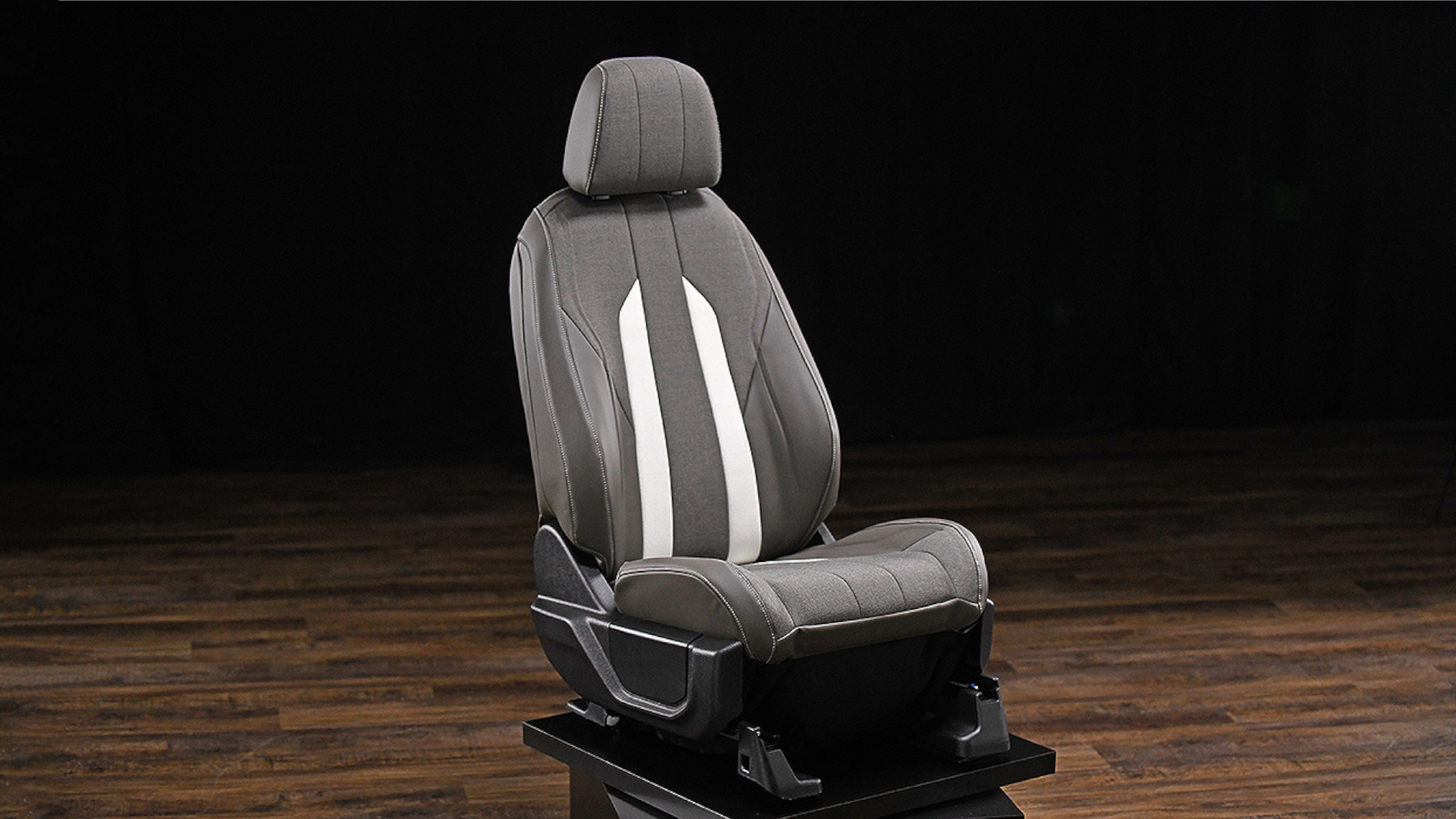

Not all car parts are recyclable. While things like engine heads and transmission cases can readily be melted down and turned into new parts, the same often can’t be said of interior materials. Automotive supplier Magna is looking to change that with a new seating material that it says is 100% recyclable.
As reported by Automotive News, Magna wants to help auto manufacturers reach their sustainability targets. Its new EcoSphere product line of foam and trim materials aims to be a more environmentally friendly solution for car interiors. By offering recyclable materials, Magna could win favor with automakers looking to reduce waste in their vehicle’s lifecycles.
The EcoSphere line uses polyethylene terephthalate (PET) plastics that can be reused at end of life. This is thanks to PET being a thermoplastic that can readily be melted down and reformed as needed. EcoSphere materials can be customized for look and feel to suit an automaker’s design requirements.


Carrie Young, Magna’s chief engineer for seating innovation, spoke to the media in Detroit on Tuesday. She noted that the company wanted to ensure “every component is made out of a mono-material that’s either made out of recycled content or can be recycled at its end of life.” These details are key to recyclability. If a product is made out of some recyclable and non-recyclable parts, it can quickly become uneconomic to separate out the materials and process them separately. This is a major problem in recycling a lot of modern items, such as solar panels and takeaway coffee cups.
To his end, the EcoSphere foam pad and trim covers are all made of compatible PET material, right down to adhesives, threads, and padding. This eliminates the need to strip out undesired materials that would contaminate the final product in a recycling process, reducing the need for complicated labor-intensive processing. “There’s no need to separate the components,” said Young. “You can just unhook it from the structure, take that foam pad with the trim cover on it, melt it down and turn it back into fiber or resin, or a PET product that can be recycled in a circular economy again and again.”

The new materials will be rolled out in 2026 as Magna begins supplying EcoSphere products to a North American automaker. Young did not disclose the exact manufacturer, but noted that the EcoSphere materials were cost-competitive with existing solutions.
A single EcoSphere trim set can be made from the PET plastic of 115 water bottles, while 138 bottles will produce a single foam pad. The full seating arrangement for a five-seater vehicle would use the plastic from around 1,200 bottles. Magna has partnered with German manufacturer TWE Group to secure recyclable materials for the project, which come from PET bottles, plastic straws, disposable coffee lids, and other waste streams collected from water courses in developing countries.

Magna has noted that recyclable seating materials will help cut automotive waste streams to a significant degree. According to the company, an average vehicle has 43 pounds of foam and trim. In the U.S. alone, 10 million vehicles are disposed of every year, creating a waste stream of 430 million pounds of interior materials. Even recycling a small fraction of that material would pose real-world benefits.
The key will be whether Magna’s new recyclable materials can measure up in terms of quality and robustness in the demanding automotive environment. Customers won’t stand for scratchy, rough, or easily-damaged interiors, after all. If the EcoSphere products are fit for purpose, expect them to become a popular solution for other automakers looking to green up their interior materials as well.
Got a tip? Let the author know: lewin@thedrive.com